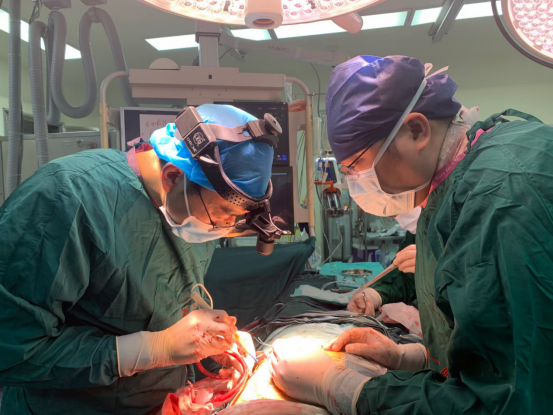On March 13, 2021, the team led by Professor Yan Yang, Director of Department of Cardiovascular Surgery of the First Affiliated Hospital of Xi’an Jiaotong University (XJTU) intimately cooperated with Department of Anesthesia and Interventional Operating Room and successfully performed transcatheter mitral valve replacement (TMVR)+transcatheter aortic valve replacement (TAVR) for a 71-year-old female patient with severe mitral regurgitation and severe aortic regurgitation. This is the 14th case of TMVR+TAVR through a trans-apical small incision in the world, and it is also the first successful transcatheter minimally invasive multi-valve replacement surgery in Northwest China.

Two valves were successfully replaced during single minimally invasive surgery in a 71-year-old female patient. The degree of mitral and aortic regurgitation was significantly mitigated immediately after surgery. In the afternoon, she restored consciousness and the tracheal intubation was removed. This complex surgery fills the gap in interventional therapy of valvular diseases in Northwest China.
TMVR+TAVR is the cutting-edge research hotspot in the field of international cardiac intervention, which avoids open surgery, cardiac arrest or cardiopulmonary bypass. Moreover, it has multiples advantages including mild trauma, slight bleeding and rapid recovery,etc. Nursing care provided by operating room is the key and difficult procedure of surgical cooperation. Immediate response to different situations and potent capability of surgical cooperation are the priorities, which also guarantee the surgical success.
TMVR+TAVR is a challenging procedure with intense surgical process, which requires seamless and tacit cooperation among anesthesia, nursing, radiation and other disciplines. Nurses in operating room are required to be fully familiar with the surgical procedures, master the ability of emergency thoracotomy and get full preparations for surgical materials and devices in advance. This novel surgery revolutionizes the traditional surgery. It is difficult to deliver transcatheter valve fixation due to the complex structure of mitral valve. The entire team is still making further exploration regarding this technology, which also imposes a challenge for nursing task in operating room. We strongly believe that, with unremitting efforts and courage, we will eventually climb on the peak of surgery.